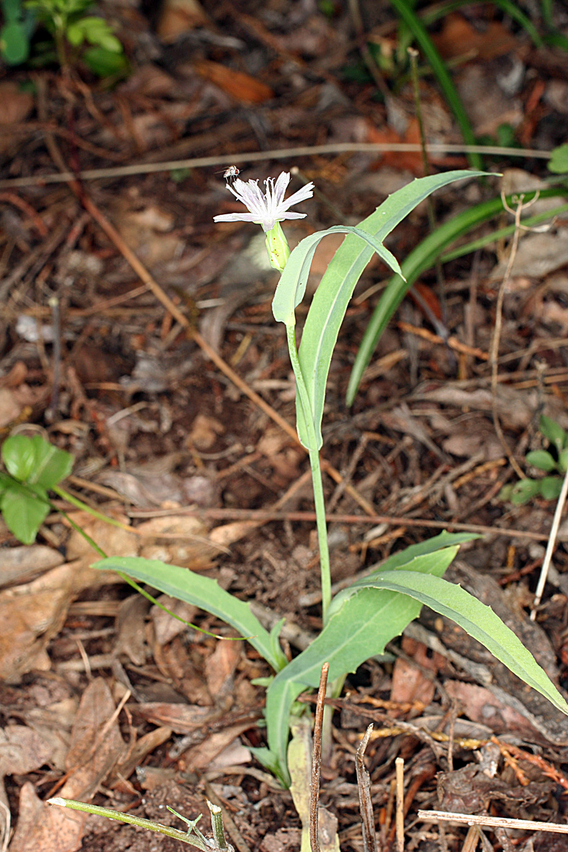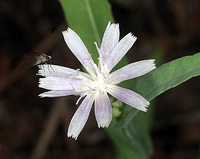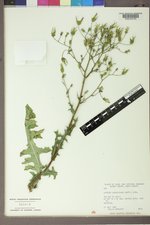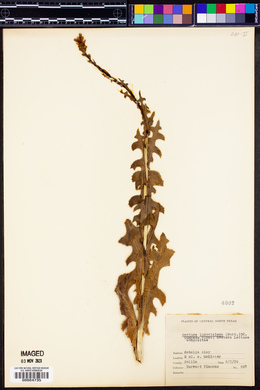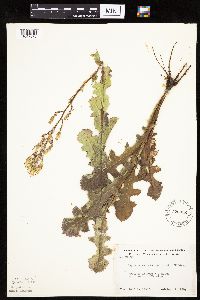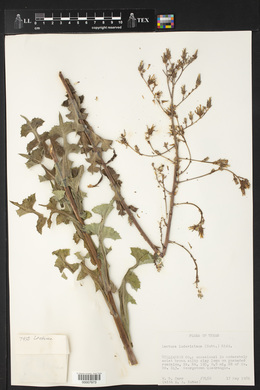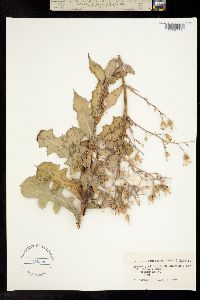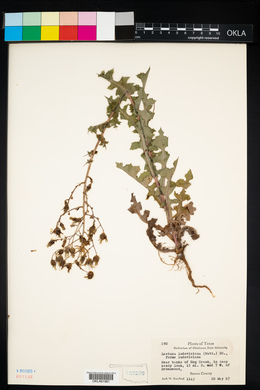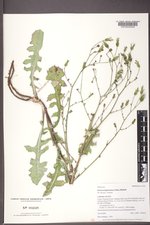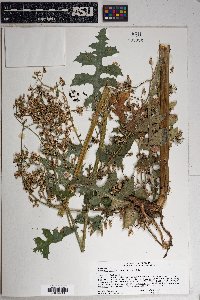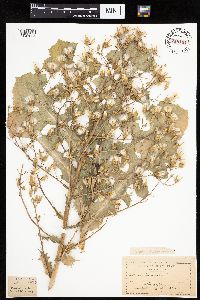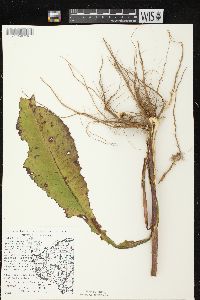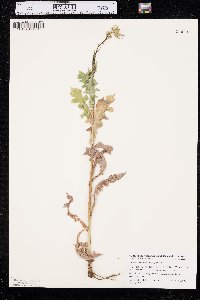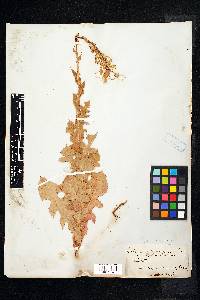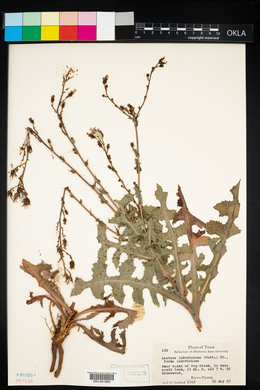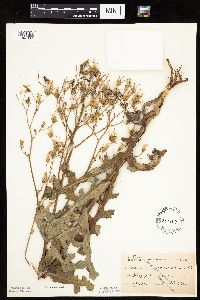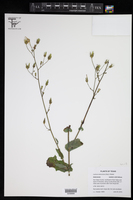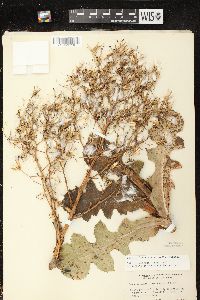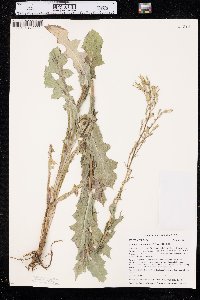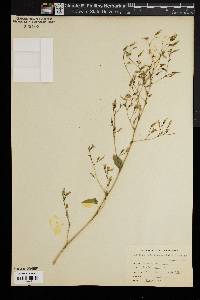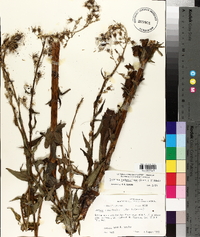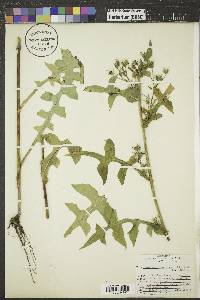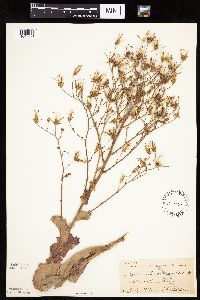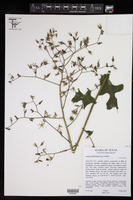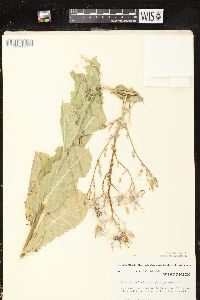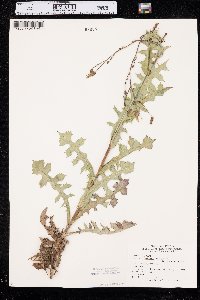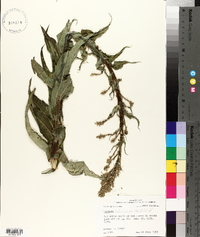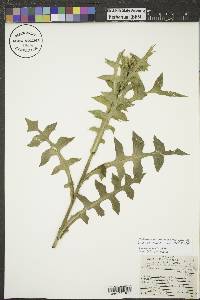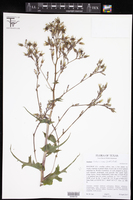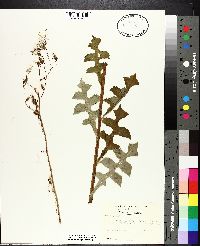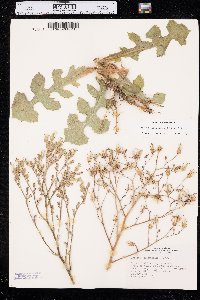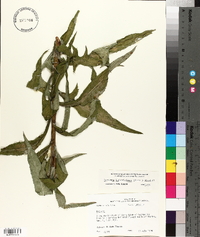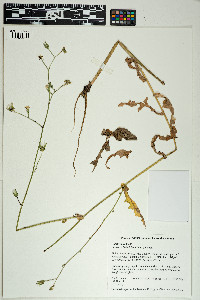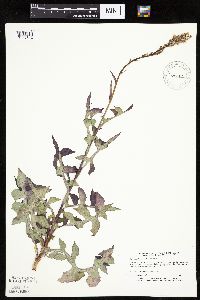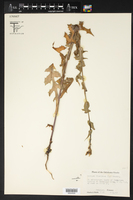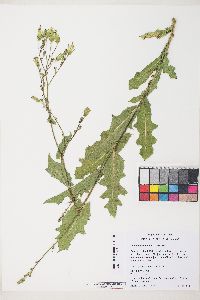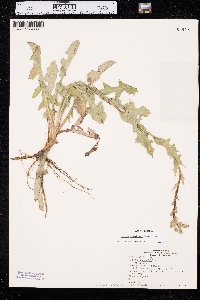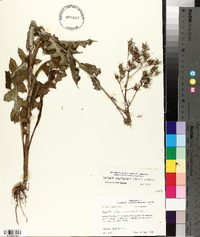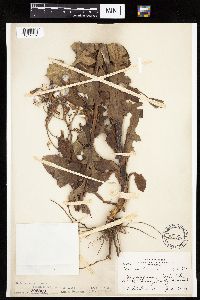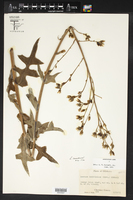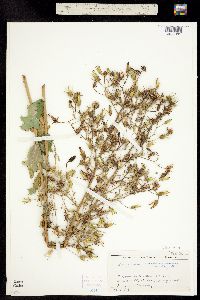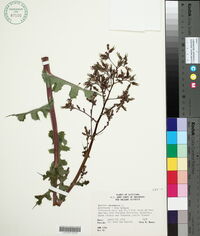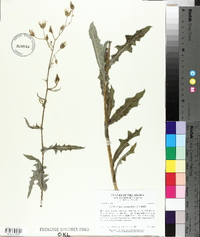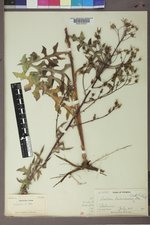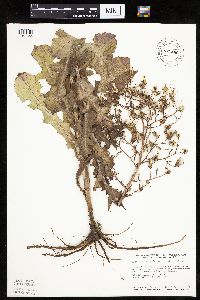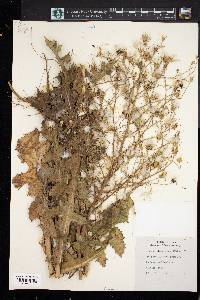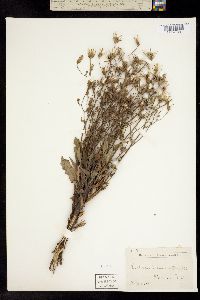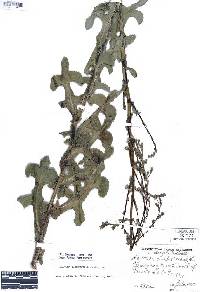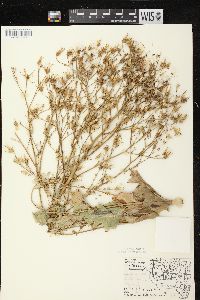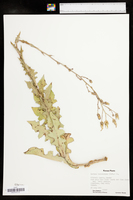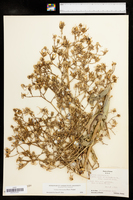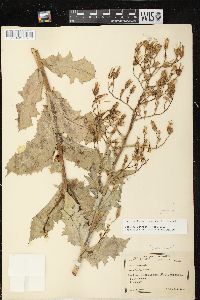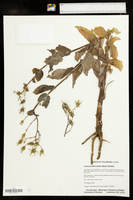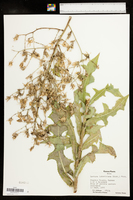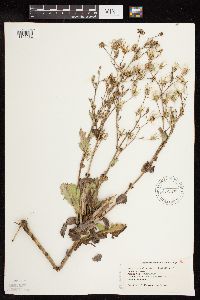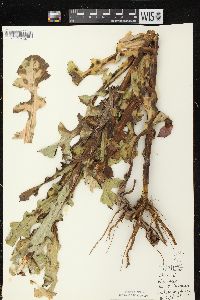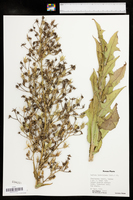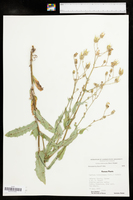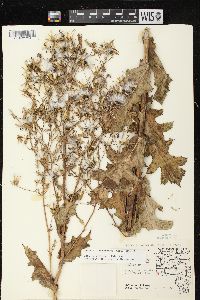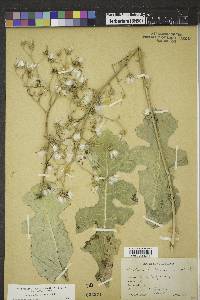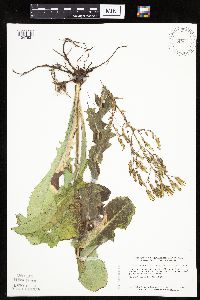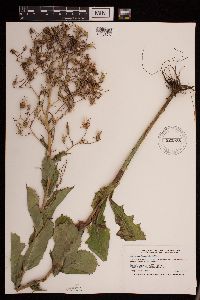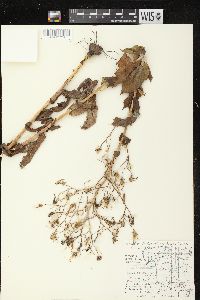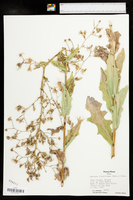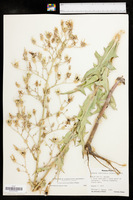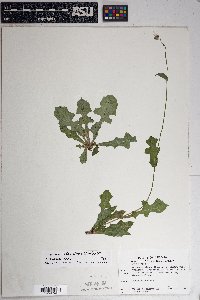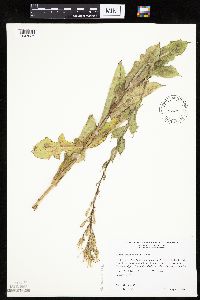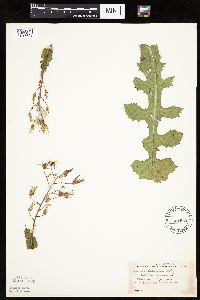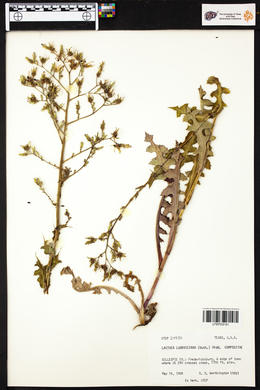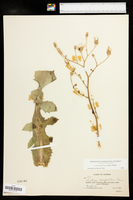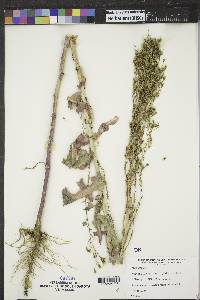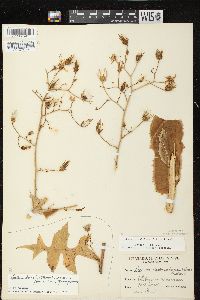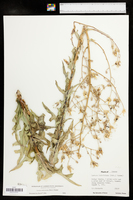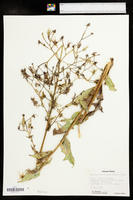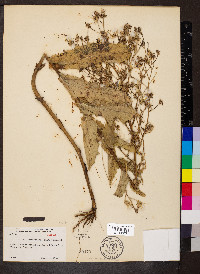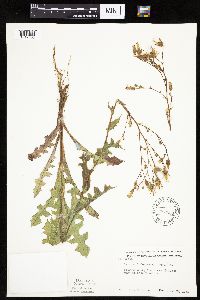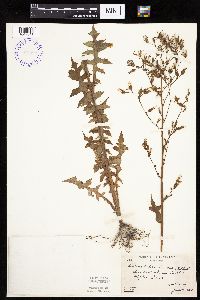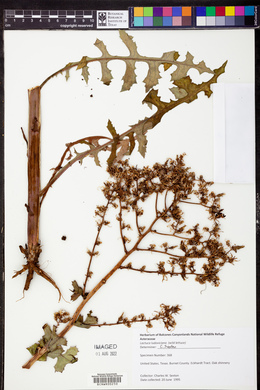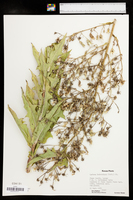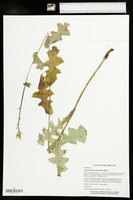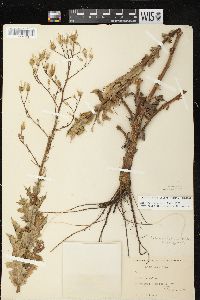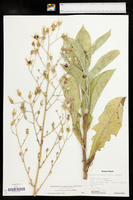Lactuca ludoviciana
|
|
|
|
Family: Asteraceae
Louisiana Lettuce, more...biannual lettuce, wild lettuce
[Lactuca campestris Greene, moreLactuca campestris var. typica Wieg.] |
Biennials, 15-150 cm. Leaves on proximal 1/2-3/4 of each stem; blades of undivided cauline leaves obovate or oblanceolate to spatulate, margins denticulate (piloso-ciliate), midribs usually piloso-setose. Heads in paniculiform arrays. Involucres 12-15+ mm. Phyllaries usually reflexed in fruit. Florets 20-50+; corollas usually yellow, sometimes bluish, usually deliquescent. Cypselae: bodies brown to blackish (usually mottled), ± flattened, elliptic, 4.5-5+ mm, beaks ± filiform, 2.5-4.5 mm, faces 1(-3)-nerved; pappi white, 5-7(-11) mm. 2n = 34. Flowering Jun-Sep. Openings in woods, stream banks, prairies; 100-1400 m; B.C., Man., Sask.; Ariz., Ark., Calif., Colo., Idaho, Ill., Ind., Iowa, Kans., Ky., La., Minn., Mont., Nebr., N.Mex., N.Dak., Okla., Oreg., S.Dak., Tex., Utah, Wash., Wis., Wyo. FNA 2006, Kearney and Peebles 1969, Martin and Hutchins 1980 Duration: Biennial, Perennial Nativity: Native Lifeform: Forb/Herb General: Biennial with stout stems 15-150 cm tall, leafy. Leaves: Only on lower half to three quarters of stem, blades of undivided leaves obovate to oblanceolate and spatulate, margins spinulose denticulate, midribs usually pilose-setose; the base auriculate-clasping. Flowers: Numerous heads in an open panicle; involucres 12-15 mm, phyllaries usually reflex in fruit; florets 20-50, corollas usually yellow, sometimes bluish. Fruits: Dark brown to black cypselae, flattened, elliptic, 4.5-5 mm, with filiform beaks, faces 1-3 nerved, pappi white, 5-7 mm. Ecology: Found in openings in woods, along stream banks 3,000-5,500 ft (914-1676 m); flowers June-September. Notes: Distinguished by its general habit, the smooth cypselae, and the spinulose margins and midribs of the leaves. Ethnobotany: The leaves were used for food. Etymology: Lactuca is Latin for milky sap, while ludoviciana means of or from Louisiana. Synonyms: Lactuca campestris, Linnaeus campestris var. typica Editor: SBuckley, 2010 Leafy-stemmed biennial or possibly short-lived perennial, the stem glabrous, 3-15 dm; lvs prickly or coarsely hairy on the midrib and sometimes also on the main veins beneath, ±prickly-toothed on the margins and usually also pinnately lobed, mostly 7-30 נ3-20 cm; heads relatively large, with 20-56 yellow or occasionally blue or pale lilac fls; invol 15-22 mm in fr; achenes strongly flattened, blackish, with a median nerve on each face, transversely rugulose, 7-10 mm overall, the slender beak equaling or a little shorter than the body; pappus 7-10 mm; 2n=34. Prairies and other open places; w. Ind. to Man., Mont., Colo., and Tex., casually intr. eastw. July-Sept.
(L. campestris, the blue-fld form) Gleason, Henry A. & Cronquist, Arthur J. 1991. Manual of vascular plants of northeastern United States and adjacent Canada. lxxv + 910 pp. ©The New York Botanical Garden. All rights reserved. Used by permission. From Flora of Indiana (1940) by Charles C. Deam I found two plants of this species in the old lake basin of Beaver Lake about 200 feet west of the bridge on U. S. Highway 41 over the Beaver Lake ditch about 3 miles south of Lake Village. It was growing in dry, sandy soil near the ditch. Evidently it is scarce in this area because a companion and I searched for several hours for more of it. The two plants were about 100 feet apart on opposite sides of the ditch. This species is conspicuously different from all others of the genus because of its leafy and short stem, and its broad rather naked inflorescence, which is well above the leaves. It was described from specimens collected in southwestern Minnesota and is a western plains and prairie plant. Its distribution is not known because most authors do not separate it from Lactuca ludoviciana which has yellow flowers. …… Indiana Coefficient of Conservatism: C = 10 Wetland Indicator Status: FACU |

